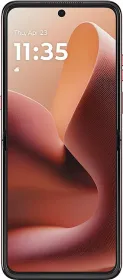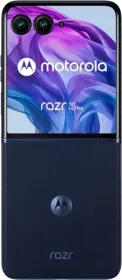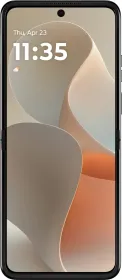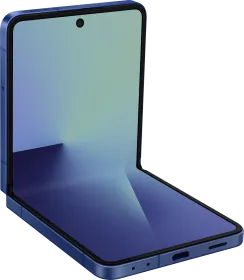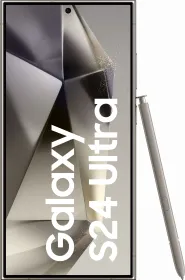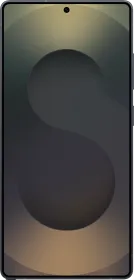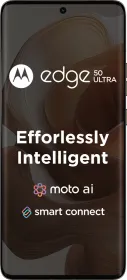The Motorola Razr 60 is marketed as an affordable flip phone, with its sleek foldable design earning praise from creators and reviewers. However, its compromises make it a questionable choice for most buyers. From an underpowered chipset to a subpar camera and unreliable software, the Razr 60 sacrifices too much for its form factor. Here are 13 reasons why you should steer clear of this device and consider a slab phone or last year’s foldable instead.
Razr 60: Don’t Let the Price Fool You—These Compromises Kill It
1. Underwhelming Performance with Dimensity 7400X

The Motorola Razr 60 is powered by the MediaTek Dimensity 7400X (a version of the 7400 with dual display support), a marginally overclocked version of the Dimensity 7300 with a 0.1 GHz boost. This chipset is severely underpowered for a ₹50,000 phone, when 7300 is commonly found in budget devices like the Infinix Note 50X priced at ₹11,000.
Thus, the Razr 60 struggles with basic tasks, resulting in laggy navigation, slow app launches, and poor multitasking. For a foldable phone in 2025, this level of performance is unacceptable, especially when slab phones in the same price range offer far superior chipsets like the Snapdragon 8 Elite, 8s Gen 4, Dimensity 9400e, and Snapdragon 8 Gen 3.
ALSO READ: Smartphones Launching in June 2025: OnePlus 13s, POCO F7, Infinix GT 30 Pro & More
2. Poor Camera Processing and Image Quality




The Razr 60’s camera system is a major letdown, plagued by inconsistent performance. Photos suffer from haze, inaccurate skin tones, and soft images with little detail. Edge detection is poor, leading to blurry or distorted subjects in portrait mode.
The slow shutter speed makes capturing spontaneous moments simply impossible. The laggy camera app further exacerbates these issues, with noticeable shutter lag and long processing times, making it unreliable even for daily use or casual photography.
3. Substandard Video Quality with Outdated Rec601

Video recording on the Razr 60 is a significant disappointment, using the outdated Rec601 color space, which was designed for 480p videos and abandoned by most brands a decade ago. Motorola’s decision to use Rec601 for 4K video recording is baffling, resulting in oversaturated colors and poor dynamic range.
Additionally, videos suffer from jittery footage due to excessive reliance on electronic image stabilization (EIS) and lackluster stabilization, making the Razr 60 a poor choice for videography as well.
4. No Netflix HDR Support

Despite being marketed as a premium foldable, the Razr 60 lacks HDR support for streaming platforms like Netflix. This omission is a glaring oversight for a device with a foldable AMOLED display, which should excel at delivering vibrant, high-dynamic-range content.
ALSO READ: Nothing Phone (3) teased with dot-matrix display, launch set for July 2025
5. Outdated UFS 2.2 Storage and LPDDR4X RAM

The Razr 60 comes with 8 GB of LPDDR4X RAM and 256 GB UFS 2.2 storage, both of which are outdated for a 2025 device priced at ₹50,000. LPDDR4X is slower than the LPDDR5X found in competitors, and UFS 2.2 storage leads to sluggish app launches, slow photo saving, and delays when viewing media.
Poor RAM management further compounds these issues, causing frequent app reloads and a frustrating user experience compared to phones with UFS 3.1 or 4.0 storage. And before you ask, the Dimensity 7400X does support UFS 3.1 storage; Motorola has decided to cut costs and go for UFS 2.2.
6. Mediocre Battery and Slow Charging

The Razr 60 is equipped with a 4,500 mAh battery and 33W fast charging, which are adequate but underwhelming for its price. Many mid-range slab phones and competing foldables offer larger batteries or faster charging speeds, such as 65W or higher. The 33W charging feels sluggish, requiring longer charging times, which is inconvenient for users who need quick top-ups on the go.
7. Buggy Software and Unoptimized Performance

Motorola’s software optimization is a weak point, and the Razr 60 suffers from a buggy user interface. Paired with the underpowered Dimensity 7400X and UFS 2.2, the software leads to frequent stutters, app crashes, and lag during everyday tasks like scrolling or switching apps. Even Motorola’s higher-end models, like the Razr 60 Ultra and Edge 60 Pro, are notorious for unoptimized software, and the Razr 60’s weaker chipset only amplifies these issues.
8. Slow and Unreliable Software Updates

Motorola’s track record for software updates is inconsistent, and the Razr 60 won’t be an exception. While security patches may arrive, they often fail to fix bugs and sometimes introduce new issues. Major Android updates are delayed, leaving users with outdated software for extended periods.
ALSO READ: OnePlus 13s to Feature a 32MP Selfie Camera with AF, a First for Any OnePlus Phone
9. Crease and Durability Concerns

The Razr 60’s foldable display is particularly susceptible to wear and tear. The visible crease in the screen becomes more pronounced over time, affecting both aesthetics and usability. The display is also less durable than traditional glass, with a higher risk of scratches or damage. For a device that’s already compromised in other areas, these durability concerns make the Razr 60 a less reliable long-term choice.
10. Poor After-Sales Service

Motorola’s after-sales support is a significant concern, especially for a foldable phone like the Razr 60, which is inherently less durable. Repairing a foldable screen or hinge is expensive and time-consuming, with limited service centers equipped to handle such devices. Users frequently report slow repair times and unhelpful customer support, making it risky to invest in a device that’s definitely going to require frequent or costly repairs.
11. Rapid Value Depreciation
Motorola devices are notorious for rapid value depreciation. Within months of release, the phone’s resale value plummets due to intense competition from older devices that offer better performance and features. Motorola’s inconsistent software and hardware quality further hurt its brand perception, making the Razr 60 a poor investment for those planning to resell or upgrade in the near future.
12. Compromises Outweigh the Form Factor

While the Razr 60’s flip phone design is nostalgic and compact, it comes at the cost of too many compromises. The underpowered chipset, poor camera, outdated hardware, buggy software, and lack of features like Netflix HDR make it a hard sell at ₹50,000. For the same price, a slab phone or an older foldable like the Samsung Galaxy Z Flip5 offers better performance, cameras, and software support, making them far more practical choices.
Should You Buy the Motorola Razr 60?

The Motorola Razr 60 may seem appealing as an affordable flip phone, but its numerous flaws make it a device to avoid. From the underpowered Dimensity 7400X and outdated hardware to the buggy software, poor camera, and unreliable after-sales service, the Razr 60 sacrifices too much for its foldable form factor. You’re better off with an upper mid-range slab phone or a previous-generation foldable that delivers a more polished and reliable experience. In 2025, the Razr 60 simply doesn’t justify its price or hype.
You can follow Smartprix on Twitter, Facebook, Instagram, and Google News. Visit smartprix.com for the most recent tech and auto news, reviews, and guides.















